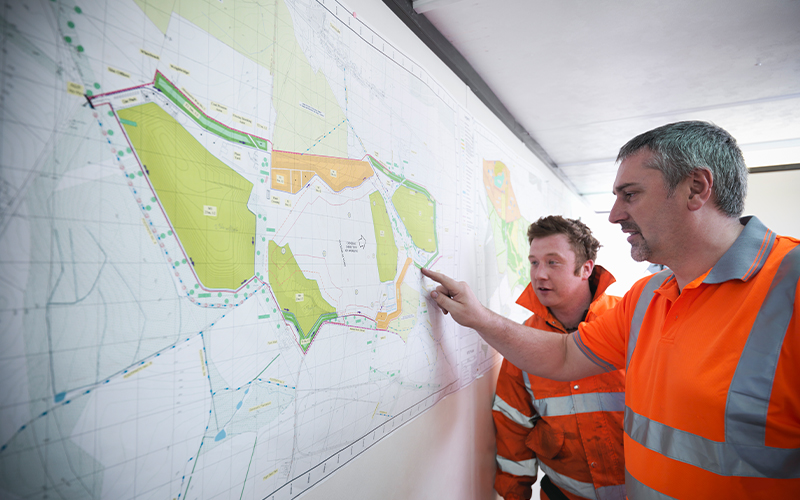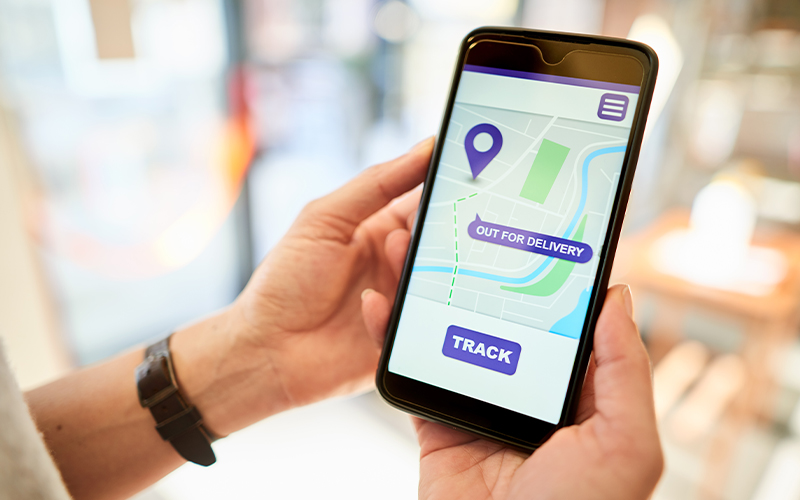Geospatial Data Services
The benefits of geospatial data in driving analytics
For several businesses, location is more crucial than ever for key decision-making. Moreover, several technological developments make geospatial data analytics insights more accessible and valuable. As more and more entities and businesses adopt geospatial analytics service, the global GIS market is expected to grow from $6.4 billion in 2020 to 13.6 billion in 2027.
Geographical Information Science (GIS), which was earlier limited to research and cartography, is now part of everyday life. Its scope has expanded to include several applications in governance, healthcare, disaster monitoring and management, marketing, supply chain management, and mapping consumer behaviour. Thus, GIS data is becoming an integral source of innovation and driving data analytics for multiple uses.
What is geospatial data analytics?
Geospatial data analytics entails gathering, integrating, and understanding several forms of geospatial data. It explains and represents how people, things, and events interact in space and make predictions based on patterns in the interactions between locations. While data analytics deals with finding the how, when, and why of events, geospatial data analytics goes a step further to determine the ‘where’ aspect of information. It also tries to decipher trends and patterns to derive why events occur at a specific place or time.
The benefits of using geospatial data in analytics
Integrating spatial thinking in the decision-making process has various benefits. Spatial and temporal patterns in large data sets are easier to spot with the help of geospatial data analysis. This approach has several benefits compared with the study of datasets stripped of any context.
- Identification of spatial patterns and trends: It is a challenge to understand specific linkages and connections without considering ‘where’ (or ‘when’) they are happening. Geospatial data analysis helps to identify trends by bringing historical data into consideration.
- Real-world modelling: Data analysis without location lacks a crucial element. Governments, entities, or businesses can model the physical environment, often in real time, with the help of geospatial data. Thus, simulating the real world helps to understand issues better and arrive at suitable solutions.
- Segmentation: When GIS data becomes part of an analysis, you can create segments and filters depending on geography, which makes the overall study more specific.
- Accurate forecasts: When you examine an event over time in the context of a particular region, you begin to comprehend why, where, and when it occurs. This improves your ability to forecast events, plan appropriate responses, or influence future events.
The several applications of geospatial data analysis underline the benefits of this technology and its ever-widening scope.
- Geographical monitoring and first response: GIS data analytics is extensively used in monitoring changing geographies through spatial and temporal studies as done with biodiversity areas. It is also a source of reliable information and insights during emergencies and crises. Geospatial data analysis helps create contingency plans in rescue operations during natural disasters such as floods, volcanic eruptions, and wildfires.
- Humanitarian relief: GIS data studies help create policies for improving life in various regions by monitoring living conditions, sanitation, and access to basic amenities. Moreover, for food safety, geospatial data is extensively used to help farmers to optimise land use and improve yield.
- Green initiatives: As the impact of climate change increases around us, finding solutions to mitigate risks come from geospatial data analytics. IoT provides area intelligence that can support green initiatives and innovation, such as better land use and transportation routes.
- Communication: Geospatial data is vital to mapping communication networks and fixing problems or finding new regions for expansion. By mapping regional signal propagation along with data traffic and demographic, telecom businesses can plan their network-building strategies.
- Cost efficiency: Geospatial data’s direct benefit to the business is growing as more businesses adopt and integrate geospatial data analysis into their growth strategies. It can improve the cost efficiency of businesses by streamlining supply chain management with real-time data of mobile assets. Moreover, businesses can reduce overheads and improve efficiency by monitoring facilities with GIS data and using digital twins for forecasting. It also assists in determining footfalls in a specific area, competition in the target space, and demographics to improve the chances of seeking successful business opportunities.
- Insurance and risk management: Whether it is agricultural insurance or risk management of assets and supply chains, geospatial data analytics can enhance visibility and transparency for creating policies, pricing them appropriately, and avoiding fraud.
For organisations on the digital transformation journey, agility is key in responding to a rapidly changing technology and business landscape. Now more than ever, it is crucial to deliver and exceed organisational expectations with a robust digital mindset backed by innovation. Enabling businesses to sense, learn, respond, and evolve like living organisms will be imperative for business excellence. A comprehensive yet modular suite of services is doing precisely that. Equipping organisations with intuitive decision-making automatically at scale, actionable insights based on real-time solutions, anytime/anywhere experience, and in-depth data visibility across functions leading to hyper-productivity, Live Enterprise is building connected organisations that are innovating collaboratively for the future.
How can Infosys BPM help?
Infosys BPM has deep domain expertise, innovation, and experience in addressing client challenges and delivers focused technology practices with a global delivery model, integrated domain excellence, and complete turnkey solutions.






